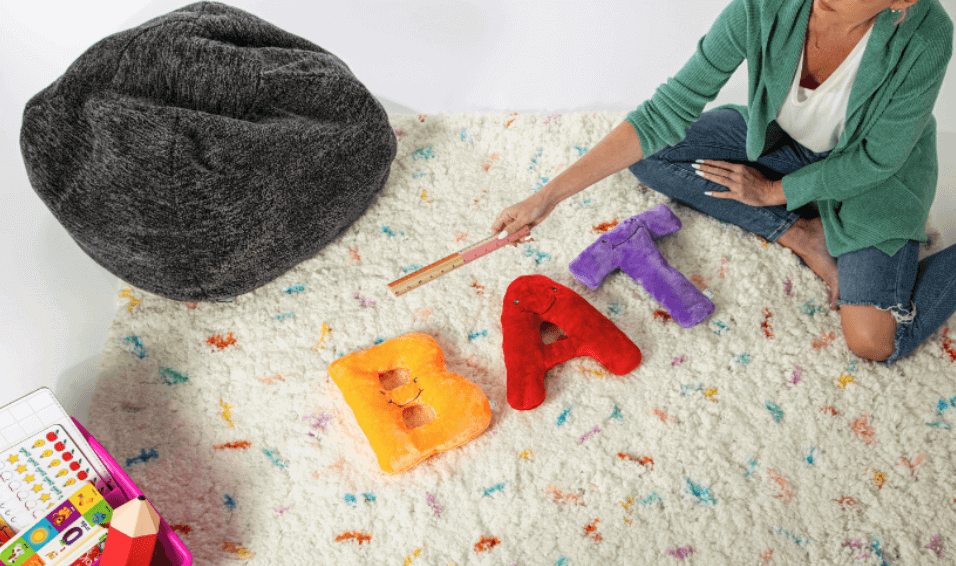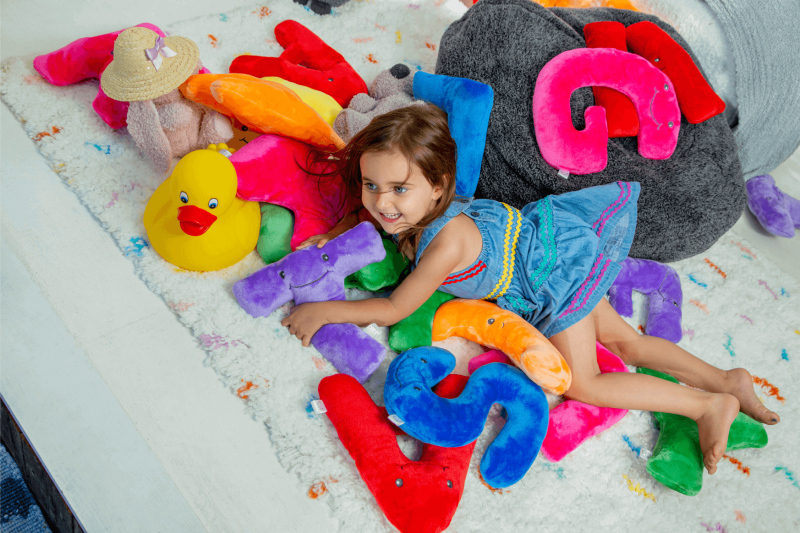
Learn How to Spell with Alphapals
December 19, 2023
Strong spelling skills are important for children to communicate effectively and develop overall literacy. The quality of their spelling has far-reaching impacts on their future education and even their employment opportunities. Mastering spelling for effective written communication helps children gain confidence, broaden their comprehension of language by recognizing words with similar origins, and understand the relationships between words.
Many parents ask questions like "How do I spell with my young children?" and "What is the best way to learn spelling words?" in preparation for teaching their kids. Keep reading to learn more about the spelling procedure, how to learn to spell, and how to overcome any challenges that may arise.
Understanding the Spelling Procedure
Breaking Down the Spelling Process
Teaching phonics and sound-letter relationships help children to learn word patterns and rules that form a foundational framework to increase their understanding and spelling accuracy. Before they can begin spelling, they need to understand that words are composed of sounds and that each is represented by a written letter. Phonics is important for spelling because this approach helps kids grasp the relationship between phonemes (letter sounds) and graphemes (written letters). They learn to listen for the sounds that make up words and connect these sounds with the letter or letters each represents.
Exploring the Role of Memorization in Spelling
Despite the benefit of phonics, written language has many rules and nuances that don't follow the common pattern. Children must also memorize common spelling rules to aid in their learning, like "I before E, except after C" and that when you add a suffix to a word ending in "Y," the "Y" changes to an "I" like family to families.
Developing a sight-word vocabulary is another important task. Sight words are words that occur often and children learn to recognize them instantly. Many sight words aren't spelled the way they sound, so memorizing them is a good way to avoid confusing children while they focus on learning to spell by sounding out words.
Learning to Spell Effectively
Techniques for Learning Spelling Words
When you start to teach your children how to study spelling words, make sure you use plenty of visualization and imagery. You can use colors, symbols, or pictures to draw attention to silent letters, tricky sounds, or to break the word down into each sound. Alphapals plush letter sets are excellent alphabet toys and tools that aid children in learning to spell.
Mnemonics and memory aids are other great techniques that use patterns or silly rhymes or phrases to teach the spelling of difficult words. For example, the word "said" isn't spelling as it sounds, so you could teach kids the mnemonic "silly ants in dresses" where the first letter of each word stands for a letter in the word "said."
Building a Personal Spelling Strategy
Every child learns differently. A tactile learner, for example, will learn best through touch, feel, and sight. It's important to identify individual strengths and weaknesses and customize study methods to target these to achieve optimal learning.
How to Study Spelling Words
Creating a Structured Study Routine
Set your child up for success by setting aside dedicated time for spelling practice. Having a structured routine puts them in the right mind frame to learn. Organize your study sessions appropriately by breaking down spelling lists into manageable sections to avoid overwhelming your kids.
Utilizing Diverse Study Methods
Children easily become bored, so use a variety of study methods to keep learning interesting. Try using flashcards and repetition exercises interspersed with interactive activities to give the children a chance for some hands-on learning fun. Switching up the approach to teaching also works well to reinforce the same concept.
Technology in Spelling Learning
Incorporating Educational Apps and Online Resources
The impressive array of technology available through various programs and applications provides fun, exciting, and unique resources to use for spelling learning. You can find numerous spelling games and quizzes online, along with interactive platforms where children can access activities for personalized spelling practice. Not only are these educational, but they also add an extra element to your teaching strategy to keep children invested in their learning.
Practical Steps to Learn How to Spell
1. Breaking Down Complex Words Into Syllables
When you first start off teaching kids to learn how to spell, you must start small. Practice pronouncing the sounds of each letter and then the syllables of the word individually. Have children identify which letters stand for each sound.
Understanding syllable rules is essential to make this strategy effective. Dividing words into syllables helps with pronunciation as well as spelling, but you first need to know how words get divided.
Some common rules are to divide between two middle consonants, divide between prefixes and suffixes and the root word, break compound words down into separate components, and divide before a single consonant, like in a-bout or e-qual.
2. Engaging in Spelling Bees and Competitions
Encouraging some friendly competition with spelling bees is an excellent way to enhance spelling skills and let children have some fun. It's also important to recognize the progress that each child makes and celebrate their achievements to encourage them to keep going.
Best Way to Learn Spelling Words
Emphasizing Consistency and Regular Practice
Regular, consistent practice is the best way to learn spelling words effectively. Children require repetition to absorb lessons. Setting aside some time each day to devote to reviewing spelling techniques and practicing is a huge part of effective learning. Using tools such as our alphabet toys make great visual aids to help your child practice letter sound recognition.
Combining Multiple Learning Methods for a Holistic Approach
The best way to learn spelling words is through a combination of approaches. Children have different learning preferences, strengths, and weaknesses that can be addressed by using a blend of visual, auditory, and kinesthetic learning strategies. Another important part of teaching spelling is to reinforce the lessons through reading and writing activities. These give children a chance to put what they've learned into practice.
Common Challenges in Learning to Spell
Addressing Difficulties and Setbacks
It's normal to run into a challenge or experience a setback while teaching children to spell. The important thing is to stay upbeat and focus on positive feedback. This reinforces good habits and draws attention away from any difficulties. Stay patient and don't be afraid to change and adapt your spelling activities to better suit your child's needs and interests.
Seeking Additional Support Through Teachers, Peers, or Spelling Resources
Spelling learning is one of the foundational skills children need to succeed. Don't be afraid to reach out for support to help you teach these crucial skills. Talk to other parents, and teachers, and check out online spelling resources to gain some tips, tricks, and insights to make the learning process easier.
Conclusion
Make sure your children have good sound and letter recognition before you move on to spelling strategies. Once they master that, you can begin to teach them spelling procedures, rules, and techniques.
Always keep a positive and persistent attitude to encourage your child to work hard at spelling improvement. Remember that effective spelling is an achievable skill with the right approach. Use helpful visual aids to reinforce your lessons to make it easier for children to grasp spelling concepts. Alphapals make the ideal spelling aid.
Shop the collection of Alphapal stuffed toys today and discover a fun and effective educational tool to support your child's spelling learning.









